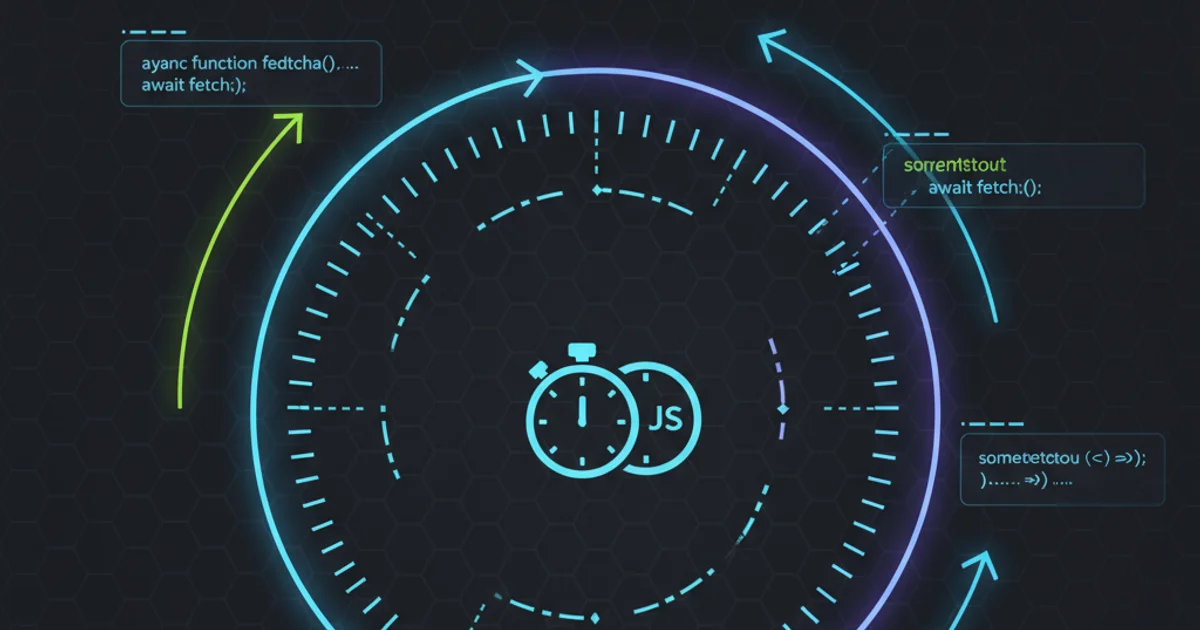Any statement similar to "when" - javascript
Categories:
Understanding JavaScript's 'When' - Asynchronous Control Flow

Explore how JavaScript handles asynchronous operations, focusing on Promises, async/await, and event-driven patterns to manage 'when' certain events or data become available.
In JavaScript, the concept of 'when' is intrinsically linked to its asynchronous nature. Unlike synchronous languages where code executes line by line, JavaScript often deals with operations that don't complete immediately, such as fetching data from a server, reading a file, or responding to user input. Understanding how to manage these 'when' moments is crucial for writing efficient, non-blocking, and responsive applications. This article delves into the core mechanisms JavaScript provides to handle asynchronous control flow, from traditional callbacks to modern Promises and async/await.
The Evolution of Asynchronous JavaScript
Historically, JavaScript relied heavily on callbacks to handle asynchronous operations. A callback is simply a function passed as an argument to another function, which is then executed 'when' the asynchronous operation completes. While effective, deeply nested callbacks (often called 'callback hell' or 'pyramid of doom') can lead to unreadable and unmaintainable code. This led to the introduction of Promises, a more structured way to manage asynchronous operations, and later, the async/await syntax, which provides an even more synchronous-looking approach to asynchronous code.
flowchart TD
A[Start Async Operation] --> B{Operation Pending?}
B -- No --> C[Execute Callback/Resolve Promise]
B -- Yes --> D[Wait for Completion]
D --> BBasic flow of an asynchronous operation in JavaScript.
Promises: A Structured Approach to 'When'
Promises represent the eventual completion (or failure) of an asynchronous operation and its resulting value. A Promise can be in one of three states: pending, fulfilled (resolved), or rejected. They provide a cleaner way to chain asynchronous operations and handle errors, making the 'when' much more manageable. You attach handlers to a Promise using .then() for successful outcomes and .catch() for errors.
function fetchData() {
return new Promise((resolve, reject) => {
setTimeout(() => {
const success = Math.random() > 0.5;
if (success) {
resolve('Data fetched successfully!');
} else {
reject('Failed to fetch data.');
}
}, 2000);
});
}
console.log('Fetching data...');
fetchData()
.then(data => {
console.log('When data is ready:', data);
})
.catch(error => {
console.error('When error occurs:', error);
});
Using a Promise to handle an asynchronous data fetch operation.
Promise.all(), Promise.race(), Promise.allSettled(), and Promise.any() for handling multiple asynchronous operations concurrently.Async/Await: Syntactic Sugar for Promises
Introduced in ES2017, async/await is built on top of Promises and allows you to write asynchronous code that looks and behaves more like synchronous code. An async function always returns a Promise. The await keyword can only be used inside an async function and pauses the execution of that function until the awaited Promise settles (either resolves or rejects). This makes handling the 'when' of asynchronous results significantly more readable and easier to reason about, especially with sequential operations.
async function processData() {
console.log('Starting data processing...');
try {
const data = await fetchData(); // 'await' pauses here until fetchData() promise resolves
console.log('When data is available:', data);
const processedResult = await process(data); // Another async step
console.log('When processing is complete:', processedResult);
} catch (error) {
console.error('When an error occurs during processing:', error);
}
console.log('Finished data processing.');
}
function process(data) {
return new Promise(resolve => {
setTimeout(() => resolve(`Processed: ${data}`), 1000);
});
}
processData();
Using async/await to manage sequential asynchronous operations.
sequenceDiagram
participant User
participant Browser
participant Server
User->>Browser: Click 'Load Data'
Browser->>Browser: Call async fetchData()
Browser->>Server: HTTP Request
Server-->>Browser: HTTP Response (after delay)
Browser->>Browser: await fetchData() resolves
Browser->>Browser: Call async process()
Browser->>Browser: await process() resolves
Browser->>User: Display Processed DataSequence diagram illustrating an async/await data loading and processing flow.
await only pauses the async function it's inside, not the entire program. Other code outside the async function will continue to execute.Event Listeners and the Event Loop
Beyond Promises and async/await, JavaScript also handles 'when' through event listeners. The browser's event loop continuously checks the call stack and the callback queue. When an event (like a click, a timer expiring, or an HTTP response arriving) occurs, its associated callback function is placed in the callback queue. 'When' the call stack is empty, the event loop pushes functions from the callback queue onto the call stack for execution. This mechanism is fundamental to how JavaScript remains non-blocking.
document.getElementById('myButton').addEventListener('click', function() {
console.log('Button clicked! This happens when the user interacts.');
});
setTimeout(() => {
console.log('This message appears after 3 seconds, when the timer expires.');
}, 3000);
console.log('This runs first, before any events or timers.');
Examples of event listeners and setTimeout demonstrating event-driven 'when'.